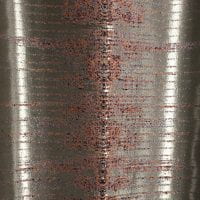Exhibition Review
- Describe the exhibition and work in detail (this should include the artist name, exhibition title, gallery.) Include a description of the media, the technology components, and the scale. Describe what is happening in the work- what is the action/ image/ installation. Your description should be so detailed that a person who has never seen the work would have a clear mental picture.
At the Pratt Galley, there was an exhibition named “Time as Design”, which shows how designers embody the nature of time into their work. On the wall of right side of the galley space, a woven piece around 3 feet high, 70 inches wide created by Nadia Anne Ricketts drove my attention. Nadia Anne Ricketts, a textile designer, awarding fashion designer and an innovative artist, has developed an audio technology that can convert sounds into pixels so that she can turn the sound into a pattern in textile. The art piece in the exhibition is derived from David Bowie’s song Let’s Dance. The pattern generated from the music is sewed on the metallic yarns using the combination of black, orange and purple thread. The patterns was intensive around the vertical mid-court line of the fabric while it unevenly spreading to the edge of the fabric horizontally. When I’m looking closely to the piece, the lines and the shapes of the pattern is actually constructed by little pixels, but overall they looks like a still image of sound waves.
- Explain why you decided to write about this work- what interests you?
The beat woven technique enables us to see the visualized music. It takes the form of textile which is a daily objects in our life. I really like it not only because the beautiful pattern on the fabric but also the way that it visualized a moving or living activities into a still form. This is unexpected and impressive.
- Interpret meaning in the work. What experience do you have when looking at the work? What ideas or issues does it explore? You can make your own judgements as well as include information from the wall text. Please remember to support these judgements/ interpretations (why?)
In order to explore the meaning in the work, I think the first thing is first to talk about what is in a song. The music itself is an evidence of the time, such as he year that it was written, the singer and the time that the song needed to play. The sound waves demonstrate the way the music exists in the world. Thus, while we’re looking at the pattern on the fabric, we’re indirectly looking at time. It makes a durational activity becomes an object, which solves the problem of visualizing time and embodying it into a form that we’re familiar with.
- Relate this work to our study of TIME. How is time used as a material in this work? Does the work use:
- Sequence (the order of moments or events, Linear or non linear)
- Simultaneity (when things happen at the same time or parallel each other)
- Speed (fast or slow, long or short duration of images/ moments)
- Repetition (A pattern or reoccurrence of a moment or event or sequence)
- Composition (the arrangement of information within the frame)
The music is a linear time. While we are combining it into the textile pattern, it can become none linear because there’re not sequence in the pattern, which means that the pattern is able to start from anywhere while for the music, there is always a start point and an ending. The other reason that the pattern may not be able to show a clear linear time is that The pattern has a lot of repetition in it .The spread of different colors of pixels on the pattern gives the viewer a sense of decrease and rhythm. from the middle to the edges of the fabric, black pixels decreases and the orange and purple pixel increases. It also leads to a visual effect that the vertical line in the middle is thicker and wider than the horizontal lines, which can be seen throughout the whole piece.



